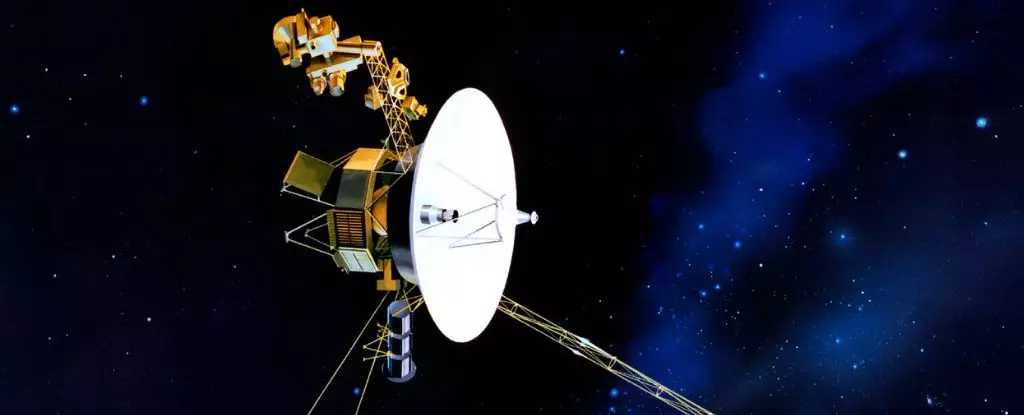Since their illustrious launches in 1977, the Voyager spacecraft have continually dazzled scientists and space enthusiasts alike with their unprecedented voyages beyond the planets of our Solar System. Voyager 1 and Voyager 2, through their groundbreaking missions, have not only explored our immediate cosmic neighborhood but have also become humanity’s first ambassadors to the interstellar realm. However, as these machines venture farther into space, they face the inevitable fate of dwindling power supplies, affecting their operational capabilities. This article examines the current state and future of Voyager 2’s mission as it grapples with the challenges of power depletion and advancing scientific objectives in the uncharted territories of space.
At the heart of Voyager’s operational challenges lies the decay of its plutonium-based power source. Voyager 2 is equipped with three radioisotope thermoelectric generators (RTGs) that once provided an impressive wattage. However, like all power systems, the effectiveness of these RTGs diminishes over time, losing approximately four watts of power annually. As the mission team prioritizes which scientific instruments to power, the decision to deactivate the plasma science instrument has been made. This decision is a testament to the need for efficient resource management as the spacecraft advances into the vastness of interstellar space.
Significantly, this decision is not taken lightly. The engineering team has worked diligently over the years to preserve the functionality of the various instruments onboard, recognizing that data from these spacecraft is irreplaceable. The plasma science instrument, while no longer collecting data continuously, has been instrumental in understanding the conditions that define the boundary between our Solar System and the vast expanse of interstellar space. With dwindling power, the scientific community watches closely as each operational change offers both challenges and opportunities.
The Voyager missions have significantly contributed to humanity’s understanding of our outer Solar System and the interstellar medium. Both Voyager 1 and 2 executed remarkable flybys of Jupiter, Saturn, and their moons, offering groundbreaking insights into the atmospheres, magnetic fields, and geology of these celestial giants. Voyager 2 notably ventured further, making history as the only spacecraft to visit Uranus and Neptune.
Currently transitioning into the Voyager Interstellar Mission phase, the spacecraft continue to gather invaluable data about the heliosphere and the surrounding interstellar environment. This data collection is crucial for advancing our comprehension of cosmic phenomena, including solar winds and cosmic rays. Both spacecraft have successfully crossed the heliopause—the boundary where solar winds cease to dominate—and have initiated an exploration of the interstellar medium, a region filled with enigmatic particles and radiation.
As Voyager 2 travels more than 20 billion kilometers from Earth, its journey continues to face both remarkable achievements and harsh limitations. Though NASA had originally anticipated the mission would yield data until at least 2020, it has surpassed expectations by continuing to collect and relay information. However, diminishing power means that future data collection will be increasingly limited. By the 2030s, there may only be sufficient energy to maintain a single operational instrument.
The implications of shutting down the plasma science instrument are multi-faceted. While it has contributed to significant findings—such as the identification of Voyager 2’s exit from the heliosphere in 2018—the current limitations of its functionalities make this decision a pragmatic one. In effect, it serves as both a recognition of advancements made and a poignant reminder of the constraints of longevity and power in space exploration.
The Legacy of Voyager: A Historical Perspective
The Voyager missions were strategically designed to take advantage of a unique alignment of the outer planets, making their historic trajectories possible. With their ability to conduct a four-planet tour, both spacecraft have become critical assets in our quest to understand the Solar System. The scientific accomplishments of Voyager 1 and 2 shaped our understanding of celestial phenomena, creating a foundation that future missions will build upon.
As we reflect on the accomplishments of the Voyager probes, it becomes evident that they transcend mere technical instruments; they encapsulate humanity’s relentless curiosity and desire to explore the cosmos. The knowledge generated through their explorations will catalyze new scientific endeavors, enriching our understanding of space and potentially paving the way for future interstellar exploration.
The Voyager spacecraft continue their historic missions despite power limitations and technological challenges. Each deactivated instrument is a reminder of the long journey they have undertaken and the invaluable contributions they have made to science. As NASA navigates this uncharted territory, the legacy of the Voyager probes will endure, inspiring future generations to embark on their own quests for knowledge among the stars.

